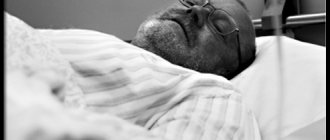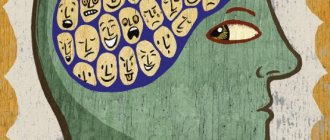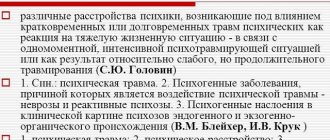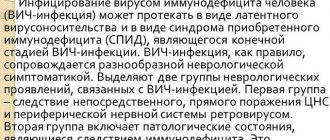Psychogenic disorders
Psychogenic (reactive) disorders are disorders of a neurotic or psychotic level that arise as a result of exposure to shocks that are very significant for a person, negative life situations, and the loss of loved ones.
This is a whole group of disorders, including reactive psychoses, depression, hysterical psychosis, etc. In the International Classification of Diseases ICD 10, psychogenic disorders are included in the heading “Reaction to severe stress and adaptation disorders,” which does not fully reflect the picture of reactive (psychogenic) psychoses.
Causes and factors contributing to the development of psychogenic disorder
The main and, in fact, the only reason for the appearance of a reactive state is the impact of mental trauma, which acts as a trigger. Many troubles happen in a person’s life: natural disasters, wars, man-made accidents, death of loved ones, difficult unforeseen circumstances. It is not always possible to withstand the pressure of negativity that surrounds us. Therefore, many cannot withstand the load, lose self-control, and do inappropriate actions.
A distinctive feature from mental illnesses such as schizophrenia or bipolar disorder is that psychogenic disorders are not associated with heredity. The presence of reactive psychosis in relatives is not the reason for its manifestation in a particular person. In addition, after leaving the psychogenic state, behavioral disorders (adaptation) do not progress; they completely disappear, leaving residual changes in the form of asthenia (exhaustion).
Despite the lack of a clear connection with genetic predisposition, different people react individually to a traumatic situation. This is due to constitutional characteristics, concomitant diseases, duration of exposure to the trigger and the level of mental exhaustion of the person.
Clinical variants of reactive psychoses
Among reactive psychoses, short-term disorders lasting several hours or days (affective-shock reactions, hysterical psychoses) and protracted conditions lasting weeks and months (reactive depression and reactive paranoid) are distinguished.
Reactive psychoses are relatively rare in clinical practice. Although accurate data on prevalence are quite difficult to obtain due to their short duration and tendency to spontaneous resolution, the number of such patients is tens of times less than that of patients with schizophrenia and MDP. Reactive depression is somewhat more common. The frequency of reactive psychoses may increase during periods of mass disasters (war, earthquake, etc.).
Affective-shock reaction (acute reaction to stress) [F43.0] develops as a result of extremely strong simultaneous psychological trauma. The subject is a direct participant or witness to tragic events (disasters, shipwrecks, fires, murder, acts of brutal violence, etc.). The power of the psychotraumatic factor is such that it can cause mental disorder in almost any person. Either reactive stupor (inability to move, answer questions, inability to take any action in a life-threatening situation, “imaginary death reaction”), or reactive arousal (chaotic activity, screaming, throwing, panic, “flight reaction”). In both cases, psychosis is accompanied by confusion and subsequent partial or complete amnesia. Random activity or inadequate inactivity in this case is often the cause of death: for example, an excited patient may jump out of a window during a fire. It is affective-shock reactions that cause dangerous panic in crowded places during disasters. Such psychoses are very short-lived (from several minutes to several hours). As a rule, no special treatment is required. In most cases, the cessation of a dangerous situation leads to a complete restoration of health, however, in some cases, the experienced events continue to disturb the patient for a long time in the form of intrusive memories, nightmares, this may be accompanied by sadness over the death of loved ones, loss of property and housing. The term post-traumatic stress disorder (post-traumatic neurosis) is used to refer to such disorders [F43.1],
In situations of significant threat to the patient’s social status (trial proceedings, mobilization into the active army, sudden breakup with a partner, etc.), hysterical psychoses . According to the mechanism of occurrence, these disorders do not differ from other hysterical phenomena (functional reversible disorders of mental activity based on self-hypnosis and the conversion of internal anxiety into vivid demonstrative forms of behavior), however, the degree of severity reaches a psychotic level, criticism is sharply impaired. A history of organic brain damage and demonstrative personality traits (see section 13.1) predispose to the occurrence of hysterical psychoses. The clinical manifestations of hysterical psychoses are extremely diverse: amnesia, psychomotor agitation or stupor, hallucinations, confusion, convulsions, thinking disorders. Quite often, the features of mental regression clearly appear in the picture of the disease - childishness, foolishness, helplessness, savagery. The most common conditions are the following.
Puerilism is manifested by childish behavior. Patients declare that they are “still small”, call others “uncles” and “aunties”, play with dolls, ride on a stick, roll boxes on the floor like cars, ask to be “handled”, whine, suck a finger, stick out their tongue . At the same time, they speak with childish intonation and make funny faces.
Pseudo-dementia is an imaginary loss of basic knowledge and skills. To the most basic questions, patients give ridiculous answers (“two and two equals five”), but usually in terms of the question being asked (immediate answers). Patients demonstrate that they cannot dress themselves, eat on their own, do not know how many fingers there are on their hands, etc. Noteworthy is the loss of those skills and knowledge that are so strong that, according to Ribot’s law, they should be preserved even with very deep dementia.
Hysterical twilight disorder (hysterical fugue, hysterical trance, hysterical stupor) [F44.1—F44.3] occurs suddenly in connection with psychotrauma, is accompanied by disorientation, absurd actions, and sometimes vivid hallucinatory images reflecting a traumatic situation. Once psychosis has passed, amnesia is noted. Usually there is a disturbance in orientation: patients cannot say where they are, they confuse the time of year.
A 31-year-old patient, a junior researcher, was taken by his relatives to a Moscow psychiatric clinic for examination after suffering from psychosis.
Since childhood, he was sociable, danced in a children's ensemble, and took part in amateur performances at the institute. He was successful with women. He married a classmate, the daughter of wealthy parents. They live in an apartment bought with money from their wife’s parents and have a 9-year-old son. In recent years, his wife has repeatedly reproached him for his frivolity, inattention to his family, and threatened him with divorce. In this situation, he always apologized and swore allegiance, but did not change his behavior. Having received accurate evidence of infidelity, the wife created a scandal and demanded a divorce. After this, the patient got dressed, slammed the door and disappeared for a month. His wife found out that he didn’t show up at work or at his parents’ house, but she couldn’t find him.
The patient himself subsequently could not remember how he ended up at the Tambov station. He approached the station attendant and began asking strange questions: “What kind of city is this?”, “What date?” Since the patient could not give his name and address, a psychiatrist was called and the patient was taken to a regional psychiatric hospital, where he remained for a month under the name “Unknown.” All this time I could not remember my name, profession, place of residence. He was surprised, looking at the wedding ring: “After all, there is a wife somewhere!” Maybe even children...” About a month later, he asked to be given a phone, because “my finger itself wants to dial a number.” Since the number turned out to be seven digits, they began calling Moscow and quickly found the patient’s wife. He was glad to see his wife’s arrival, listened with interest to information about himself, and asked for forgiveness for offenses that he does not remember at all.
No mental disorders were found in the Moscow psychiatric clinic. The patient is well adapted to the department and willingly communicates with his roommates. He thanks the doctors for “giving him back his memory.”
In Ganser syndrome [F44.80], all of the above disorders can occur simultaneously. Helplessness in answering the simplest questions, inability to correctly name parts of the body, and to distinguish between the right and left sides is combined in these patients with childishness and disorientation. The answers, although incorrect, indicate that the patient understands the meaning of the question asked (indirect speech, passing speech). Hallucinations may occur. The syndrome was first described by S. Ganzer (1898) in a trial situation, but it can also arise as a result of other psychotraumas. The “feralization” syndrome, manifested by animal behavior, has manifestations similar to Ganser’s syndrome. The patient walks on all fours; laps up food from a plate; howls like a wolf; bares his teeth, tries to bite.
Typical delusions in hysterical psychoses rarely develop - delusional fantasies are more often observed (see section 5.2.1), in the form of vivid, absurd, emotionally charged statements that are very changeable in plot, unstable, and easily acquire new details, especially when the interlocutor shows concern for them interest.
Hysterical psychoses are usually short-lived, closely related to the urgency of the traumatic situation, always result in complete recovery, and can resolve without special treatment. Reactive depression and reactive paranoid are usually longer lasting and often require the intervention of a psychiatrist.
The symptoms of reactive depression fully correspond to the concept of “depressive syndrome” (see section 8.3.1), which is manifested by a pronounced feeling of melancholy, helplessness, sometimes lethargy, and often suicidal thoughts and actions. Unlike endogenous depression, all experiences are closely related to the trauma suffered. Typically, the causes of reactive depression are situations of emotional loss - the death of a loved one, divorce, dismissal or retirement, moving from home, financial failure, a mistake or misconduct that can affect the rest of life. Any reminder of a traumatic event or, conversely, loneliness, which predisposes to sad memories, increases the severity of the patient’s experience. Ideas of self-accusation and self-deprecation reflect existing psychotrauma. Patients blame themselves for the death of a loved one, for their sluggishness, for not being able to save their family. Although such conditions can be long-lasting and sometimes result in suicide, timely medical assistance leads to complete recovery. Repeated attacks of depression in such patients usually do not occur.
A 32-year-old patient, a civil engineer, was admitted to the clinic after an unsuccessful attempt at self-hanging.
Heredity is not burdened. He grew up in an intelligent family. The father was strict and completely controlled the entire family life. Died of myocardial infarction. The mother is simple, sincere, caring. The older sister is active and active. After the death of her father, she took all the initiative in the family into her own hands. The patient himself was always very obedient, attached to his mother, and a good student. Graduated from the institute with honors. By assignment he worked at a construction site as a foreman. Got married, had a daughter.
He was noticed by his superiors as a responsible and smart specialist. A year after graduating from the institute, he was appointed first as an engineer and then as deputy head of the construction department. I was pleased with my career growth, but constantly felt anxious when it was necessary to make a responsible decision, and was forced to often consult with my boss. However, he did not always understand his uncertainty and sought to promote him in his career. During his studies at the Academy of National Economy, he was entrusted with the responsibility of managing the entire administration. This caused great anxiety in the patient, but he did not dare to object to the boss. In the very first days I felt that I was completely unable to cope with the leadership. He was afraid of any deviation from the law, showed unnecessary stubbornness and intractability. I couldn’t do anything at home because I was constantly thinking about my behavior at work. Sleep was disturbed. The wife gently reproached the patient for avoiding intimacy with her. Didn't take care of the child or housework. After the next salary, construction workers came in a crowd to his office with accusations, since the earnings turned out to be significantly less than under the previous boss. That evening I couldn’t sleep, I smoked a lot. His wife was worried and kept an eye on him. I noticed how he took the rope and locked himself in the bathroom; screamed and demanded to open the door.
Upon admission, the patient is depressed; blames himself for not being able to cope with work; calls himself “impotent” and regrets that his wife got involved with such a “worthless person.” Closed He does not seek an appointment with a doctor, does not see any prospects in life. After treatment with antidepressants and psychotherapeutic conversations with a doctor, my mood improved significantly and I felt a “taste of life.” I intend to find a more suitable job that does not involve high responsibility. Over the next 10 years of observation, such attacks did not recur.
As already indicated, severe psychotic reactive depression in ICD-10 is designated as a single depressive episode [F32]. Less severe states of depression, closely related to stress, are sometimes referred to as “depressive neurosis” [F43.2],
Reactive paranoid [F23.31] is a delusional psychosis that occurs as a reaction to psychological stress. Such delusions are usually unsystematized, emotionally charged (accompanied by anxiety, fear), and occasionally combined with auditory deceptions. In typical cases, the onset of psychosis is facilitated by a sudden change of situation, the appearance of a large number of unfamiliar people (military operations, long journeys in unfamiliar areas), social isolation (solitary confinement, foreign language environment), increased human responsibility, when any mistake can cause serious consequences. An example of reactive paranoid would be “railway paranoids,” which often arose in previous years, when train trips lasted many days and were associated with a constant fear of falling behind the train, losing things, or being the prey of bandits. Social isolation is likely the cause of delusions in people with hearing loss, who begin to feel that people are hiding something from them, up to no good, and discussing them among themselves. Reactive paranoids also include induced delusions that arise in primitive individuals who constantly live with a mentally ill person and blindly believe in the justice of his judgments (see section 5.2.1). Reactive paranoids were observed especially often during wartime.
A 29-year-old patient, an artillery officer, was admitted to a psychiatric clinic due to abnormal behavior and fear of persecution.
Heredity is not burdened. Born in the Moscow region in the family of a professional military man. I was an average student, and in high school I decided to enter a military school. In the last years of his studies at the school, he got married. He was assigned to serve in Germany, where he lived with his wife and newborn child. He received a good salary, worked a lot around the house, and tried to free his wife from unnecessary worries.
After the collapse of the Warsaw Pact, he was transferred to service in Georgia, where he participated in military operations. At that time, the wife lived in the Moscow region with her parents. He could not contact his wife: she had no information about him for about 3 months. His arrival on vacation was greeted coldly by his wife; accused him of abandoning them. Friends and neighbors hinted to the patient that his wife was not really expecting him, that she had someone else. While walking with my son, I met my wife and her lover. There was a fight in which the lover severely beat the patient. He went to live with his parents. I was depressed, didn’t sleep, and worried about the injustice of the situation. He began to notice that people on the street were paying attention to him. He left his city for Moscow to stay with his aunt, until “the rumors in the city died down.” However, on the train I noticed people whom I considered friends of my wife’s lover. He decided that they would pursue him in Moscow too. I drove from the station, confusing the road, trying to break away from my pursuers. Aunt immediately noticed his ridiculous behavior and statements and insisted on treatment by a psychiatrist.
At the clinic he is confused and suspicious of other patients. Finds that they look like one of his relatives. He treats doctors with boundless trust and seeks their salvation from his persecutors. He blames himself for not being able to restrain himself and getting into a fight (“I should have just walked away from her”). He admits that he continues to love his wife and is ready to forgive her for her betrayal. Thoughts of persecution during treatment with antipsychotics gradually disappeared within 9-10 days. Later he was surprised at the absurdity of his fears, expressed his intention to leave military service, make peace with his wife and move in together (“It’s my fault that I left her for three months without a livelihood. What else could she do?”). At discharge, no maintenance treatment was prescribed; over the next 9 years of follow-up, he did not contact psychiatrists.
In most cases, with reactive paranoid delusions are unstable and respond well to treatment with psychotropic drugs (neuroleptics and tranquilizers); disappears without treatment if the traumatic situation is resolved.
Etiology and pathogenesis of reactive psychoses
Although psychotrauma is the obvious and main cause of reactive psychoses, it remains not entirely clear why, in similar pathogenic situations, psychoses develop only in a small number of victims. Factors contributing to the development of psychosis are considered to be increasing fatigue, constant tension, concomitant somatic diseases, previous head injuries, lack of sleep, intoxication (including alcoholism).
The very nature of the traumatic event to some extent determines the nature of mental disorders: life-threatening catastrophe - affective-shock reactions; situation of emotional loss - reactive depression; an uncertain situation suggesting a possible threat in the future - reactive paranoids.
Premorbid personality characteristics and the existing system of life values may be important for the formation of a psychotic reaction. It is assumed that psychosis occurs when the most important, key needs for the individual are infringed (“key experience” according to E. Kretschmer, 1927). One can trace a noticeable correlation between lingering reactive paranoids and the patient’s stuck (paranoid) personality traits, which are manifested by a tendency to form overvalued and paranoid ideas. Reactive depression can develop in any type of personality, but it occurs more easily in pedantic and dysthymic individuals, who are initially prone to low self-esteem, pessimism, and who prefer, in a stressful situation, to attribute responsibility to themselves for any failures. It is believed that the likelihood of affective-shock reactions depends little on the personal characteristics of the individual.
Differential diagnosis
Diagnosis of affective-shock reactions and hysterical psychoses usually does not present great difficulties. Sometimes such psychoses go away before the patient sees a doctor, and diagnosis has to be made based on anamnestic data (for example, during a forensic psychiatric examination).
The diagnosis of reactive depression and reactive paranoid causes much greater difficulties, since, as is known, psychotrauma can provoke the occurrence of endogenous psychoses (MDP and schizophrenia). K. Jaspers' triad is of primary importance for differential diagnosis. Reactive psychoses are characterized not only by their occurrence after psychotrauma, but also by a close connection with the traumatic event in all manifestations of the disease. All the patient's thoughts are concentrated on the traumatic event. He constantly returns in conversation to the same topic that worries him. On the contrary, a clear hereditary burden, the autochthonous (independent of the relevance of experiences) nature of the course of the disease, noticeable rhythmicity, periodicity of symptoms, the appearance of atypical symptoms not related to psychotrauma (for example, mental automatism, catatonia, mania) indicate against reactive psychosis.
It should be taken into account that reactive psychoses are favorable functional disorders, therefore the appearance and increase of any negative symptoms (personality changes, intellectual-mnestic defect) should be considered as a phenomenon incompatible with the diagnosis of reactive psychosis.
Classification of reactive states
Reactive states exist within the framework of neurosis and psychosis. In the first case, the patient remains critical of his condition. During psychosis, a person cannot control himself; he acts destructively and thoughtlessly, often under the influence of hallucinations and delusions.
The following forms of reactive psychoses exist:
- Acute reaction to a stressor (synonym – affective-shock reaction) – reactive psychosis
- Hysterical psychosis - hyperkinetic forms (hysterical excitement - Ganzer psychosis in jailers, during abduction), hypokinetic forms (mutism, stupor, pseudodementia).
- Psychogenic paranoid
- Psychogenic depression
General characteristics of psychogenic disorders that arise in extreme situations
Many mental states observed during extreme situations can be classified as a group of so-called psychogenic disorders. Most often these include a variety of neurotic and pathocharacterological reactions, neuroses and reactive psychoses. The common feature of all these disorders is that they are situationally determined. Their intensity depends on the nature of the pathogenic circumstances, which include: the specificity of environmental factors, the severity and strength of their impact, as well as the semantic content of psychotrauma.
It should be noted that the treatment of psychogenic or other mental disorders is not the task of a psychologist. Treatment is the prerogative of a medical specialist, in this case a psychiatrist or psychotherapist. However, a psychologist must have a clear understanding of the symptoms of mental disorders and be able to differentiate between normal and pathological conditions. The ability of a psychologist to correlate the observed condition with normality or pathology is especially important in the event of extreme situations, when timely provision of psychological or first aid allows in some cases to avoid more severe consequences. From this point of view, it seems appropriate to consider in more detail the features of psychogenic disorders when extreme situations occur.
According to the opinion prevailing in modern medicine, psychogenic disorders can be divided into two groups: with non-psychotic symptoms (psychogenic reactions and conditions) and with psychotic symptoms (reactive psychoses). The basis for the distinction is the presence in patients of the second group of severe mental disorders, the so-called psychotic forms of pathology: gross disturbances of consciousness, hallucinations and delusions, severe emotional disorders, psychomotor disturbances, etc.
The first group of psychogenic disorders includes various disorders of a neurotic type. Among them: anxiety (fear) neurosis, hysterical neurosis, neurotic phobias, obsessional neurosis, depressive neurosis, neurasthenia, etc. This category also includes the so-called acute reactions to stress.
Characterizing psychogenic disorders observed in life-threatening situations during and after natural disasters and catastrophes, Yu. A. Aleksandrovsky and his colleagues consider it appropriate to distinguish three diagnostic groups:
- non-pathological (physiological) neurotic reactions (reactions to stress, adaptation reactions);
- neurotic reactions and conditions;
- reactive psychoses. Each of these three groups has its own characteristics and characteristics.
Thus, non-pathological neurotic reactions are characterized by a predominance of emotional tension, psychomotor, psychovegetative, hypothymic manifestations, preservation of adequate self-esteem and the ability to perform purposeful activities. Psychogenic pathological reactions are characterized by: neurotic level of disorders, asthenic, depressive, hysterical and other syndromes, decreased adequacy of assessment of what is happening and one’s actions. The stabilization of neurotic disorders indicates the development of neurotic conditions - neurasthenic and other neuroses, while there is a significant decrease in the adequacy of the assessment of what is happening and the self-esteem of the individual.
The third group of disorders can manifest themselves in the form of acute or prolonged reactive psychoses. Acute reactive psychoses are characterized by affective-shock reactions, twilight states with motor agitation or motor retardation. Protracted reactive psychoses are characterized by the manifestation of depressive, paronoid, and pseudodementia syndromes.
These groups of disorders and disorders can have a dynamic development character, gradually replacing each other, moving from non-pathological forms to pathological ones. It should be noted that different stages of development of psychogenic mental disorders are characterized by different clinical manifestations.
For example, non-pathological neurotic manifestations are characterized by asthenic disorders, anxious tension, autonomic dysfunction, night sleep disorders, the emergence and decompensation of psychosomatic disorders, a decrease in the threshold of tolerance to harmful substances (and these symptoms are not combined into syndromes, so there is the possibility of their complete self-correction).
With neurotic reactions, a controlled feeling of anxiety and fear and various neurotic disorders are noted. In addition, a certain decompensation of personality-typological characteristics is possible.
At the next stage in terms of severity of the mental state - the stage of neuroses - stabilized and clinically formed neurotic states are diagnosed, including clearly expressed depressive or asthenic-depressive, neurasthenic, hypochondriacal disorders.
Did not you find what you were looking for?
Teachers rush to help
Diploma
Tests
Coursework
Abstracts
With reactive psychoses and affective-shock reactions in people who find themselves in an extreme situation, there is a feeling of fear, reaching a feeling of immediate death, disorganization of behavior (for example, random throwing, stampede or numbness, stupor), impaired awareness of the environment, perception and comprehension, uncritical attitude towards your condition.
Despite the existing significant features and differences, mental disorders arising from exposure to extreme environmental factors should probably be considered as special cases of psychogenically provoked mental maladjustment. This is the conclusion that many researchers who study the problem of human adaptation and maladaptation come to.
The problem of adaptation is one of the central problems in the study of man and his body. Thanks to such a phenomenon as adaptation, all living organisms have the opportunity to adapt to constant changes in the external environment and thereby survive. Man as a biological object also has the ability to adapt to changes in the external environment. This human ability has been constantly improved.
However, as human society developed, the importance of biologically adaptive mechanisms gradually decreased, and the role of social adaptation mechanisms increased. Despite the fact that man is a biosocial being, his social essence in the process of phylogenesis acquired more and more dominant significance. As a result, social adaptation has become a mechanism that provides modern man with security in general (including security from many natural disasters and other life-threatening influences) through the appropriate construction of relationships between people.
At the same time, psychiatrists state that the importance of social factors in the origin of many painful human disorders, and primarily the so-called psychogenic factors, is increasing from year to year. Psychogenies seem to replace physiogenies in the origin of painful disorders in general and states of mental maladaptation in extreme conditions in particular.
How and why do psychogenic disorders occur? There are several concepts that try to answer this question. One of them - the concept of an individual barrier to mental adaptation - belongs to Yu. A. Aleksandrovsky. In his opinion, with any psychotraumatic influence that causes the occurrence of neuropsychic disorders, a violation of the most complex forms of a socially determined, adapted and relatively stable stereotype of a person’s response to the environment occurs. In this case, certain mechanisms for the formation of a new response stereotype should be activated. However, a change in behavioral stereotype does not occur for everyone, since for some, in a traumatic situation, a lack of “degrees of freedom” of an adequate and purposeful response is discovered, that is, a person cannot overcome the boundaries of his usual way of responding. In other words, a person in an extreme situation may not have enough social and biological capabilities to process information, the speed of its receipt and quantity. As a result, the preconditions are created for the occurrence of psychogenic disorders.
Thus, according to this concept, every person has a certain barrier to mental adaptation. This barrier, as it were, absorbs all the features of a person’s mental makeup and response capabilities. It is based on two foundations - biological and social and is essentially their single integrated functional-dynamic expression. Consequently, as long as a person’s behavioral reactions are within acceptable limits and do not go beyond the barrier of mental adaptation, the person successfully adapts, but in the event of a “breakthrough” or “destruction” of this barrier, a mental breakdown occurs, which can lead to the development of the disease.
Probably, this concept is one of the most successful concepts of the emergence of psychogenic disorders in extreme situations. At the same time, it should be noted: although it explains the principles of the occurrence of psychogenic disorders (this is very important for medicine), for a number of reasons it is insufficient for a psychologist.
So, despite the fact that Yu. A. Aleksandrovsky recognizes the importance of the social component of a person for his successful adaptation, he does not consider personal characteristics that influence the success of adaptation and determine the likelihood of the occurrence of psychogenic disorders in extreme situations. This position of the author of the concept may be due to the fact that for him, as a doctor, the fact of a psychogenic disorder and an understanding of the general mechanisms of its occurrence are more important, since the object of his activity is, as a rule, a sick person. The object of a psychologist’s activity is an ordinary, healthy person, so it is more important for him to know the personal characteristics of a person that determine the possibility of successful adaptation in a wide variety of conditions. Knowledge of these features allows the psychologist to predict the success of activities and the likely consequences for health in sudden extreme situations.
In addition, when talking about human reactions under extreme conditions, it should be borne in mind that human behavior is not just a response to external influences. From the point of view of domestic psychology, behavior is an act of consciousness, conditioned, on the one hand, by the influence of factors of the external environment, and on the other, by the peculiarities of the moral sphere, current motives, the totality of components of the self-concept, etc. Consequently, human behavior most often is active, not reactive. Therefore, it is not entirely appropriate to talk about behavioral reactions without considering personal characteristics. This once again emphasizes the need to study those personal characteristics that determine human behavior in extreme conditions.
But, considering psychogenic disorders in the event of extreme conditions, it should be emphasized: in addition to psychiatric disorders, there is a whole class of disorders that cannot be considered as mental disorders. Most often they are called psychological disorders, or reactions to acute emotional stress. Most of these reactions are typical for cases related to the performance of certain professional activities.
Symptoms of psychogenic disorders
Psychogenic disorders are divided into 3 groups:
Acute psychogenic-traumatic psychoses (reactive)
An acute reaction to stress is a state of shock that occurs under the influence of an extreme situation (natural disaster, exhausting combat operations in war). These include two options: hypokinetic and hyperkinetic.
The classic description of these options belongs to Ernst Kretschmer.
The hypokinetic variant is called psychogenic stupor. Kretschmer called it the “imaginary death reflex.” Why reflex? Because this is the accepted way among animals - this is the norm of reaction. Bug, rabbit, etc. play dead in times of danger. After a sudden massive injury, a person experiences motor numbness with a twilight disturbance of consciousness. This stupor lasts from a couple of hours to 2 days. In most cases, the acute period is not remembered by patients. After leaving the state for 2-3 weeks, a person feels exhausted.
The hyperkinetic variant is called reactive excitation. According to Kretschmer, this is a “motor storm reflex.” Since it is observed normally again in animals. In those conditions when the animal cannot escape, its reflex of chaotic disorderly motor excitation turns on - suddenly a random movement will help it escape and survive. But in humans this is a pathological reaction. There is also increasing anxiety, fear, and chaotic psychomotor agitation. There is no criticism, and such an acute psychotic disorder lasts 15-30 minutes. Afterwards, these people do not remember anything, since they had a twilight state of consciousness.
A striking example is the episode from the film “All Quiet on the Western Front,” where a soldier tried to run out of a dugout during artillery shelling, chaotically waving his arms, and did not understand the speech addressed to him - he began to experience a motor storm reflex.
Hysterical psychosis
In many ways it is similar to an affective-shock reaction. However, consciousness is only partially impaired, and the higher functions of the cerebral cortex are preserved. The main types of reactive hysteria:
- Hysterical narrowing of consciousness . The behavior of patients is demonstrative; they laugh, sing, scream, and “have convulsive seizures.” The person is disoriented, he develops deceptions of perception, and upon exiting the state, he experiences partial amnesia.
- Pseudodementia – the patient experiences imaginary dementia. He cannot carry out basic arithmetic calculations, forgets the names of objects, and performs illogical actions.
- Puerilism is a form of hysterical reaction in which the patient behaves like a child. He calls those around him “aunt” and “uncle,” puts shoes on his hands, crawls on the floor, and speaks with a childish intonation.
Protracted reactive psychoses and neuroses
These include reactive depression and reactive paranoid. These forms have a classical definition given by Karl Jaspers (Jaspers triad).
- Psychosis occurs after and as a result of mental trauma.
- The symptoms of psychosis reflect the content of mental trauma.
- Psychosis ends at the end of mental trauma and depends on the type of personality and the nature of the trauma. A psychosthenic person, for example, will give depression, and an explosive person will give paranoid.
Psychogenic paranoid is a rather rare reactive state that requires either a very high amplitude of the stress factor or prolonged exposure to a trigger situation. A person develops delusional ideas that have a clear connection with this event. For example, wartime paranoia is indicative. A soldier who has survived combat operations cannot get rid of the feeling of insecurity and readiness to strike at any moment. He looks for cover and mistakes people he meets for enemy soldiers. An example of such a state is well described in Remarque’s novel “The Return”. Reactive paranoid is often called according to the typical situation of its occurrence: road paranoid, foreign language environment, prison, etc. Here it is necessary to note another form of reactive paranoid, such as induced. It occurs in the presence of a donor (mentally ill person) and a recipient (located next to the donor).
It is imperative to carry out a differential diagnosis of psychogenic paranoid with a process disease - schizophrenia, where paranoid symptoms are also often observed. With psychogenic paranoid, paranoid (paranoid, systematized) delusions of interpretation are observed. In schizophrenia, the typical delusion is primary (synonymous with paranoid, unsystematized) - delusion of ready-made knowledge.
Psychogenic depression is observed when the patient indicates a clear connection between low mood, depression and a traumatic situation. Depressive symptoms do not always reach a psychotic level, and according to the modern classification of ICD 10, it is then interpreted as “Short-term depressive reaction” and “Prolonged adaptation reaction” (lasts up to two years). In the first case, painful experiences follow immediately after the misfortune. The person feels fear, despair, and has suicidal thoughts. Long-term depression is characterized by a long interval between the trigger and the onset of symptoms. It can reach 6-12 months (no more than 2 years). The patient complains of a feeling of hopelessness, depression, and insomnia. Memories of a traumatic situation are enough to aggravate symptoms.
If depressive symptoms reach a psychotic level, then we observe characteristic manifestations that are observed in severe depression: a significant decrease in self-esteem, ideas of self-abasement (one’s own insignificance) and self-blame (guilt), significant psychomotor retardation, and then normal everyday and social functioning becomes impossible. Exhaustion and dehydration may occur. Delirium, which can occur in the clinical picture, is usually congruent with mood and reflects the content of mental trauma. Suicidal thoughts and even intentions are common, and this can lead to suicide attempts and loss of the patient.
Psychogenic factors can act as the main cause (in reactive states), and also as a provoking or precipitating factor (in endogenous psychoses).
Chronic mental trauma can play the role of a predisposing factor for acute affective reactions, cause neuroses and determine psychopathic development against the background of character accentuations. It is no coincidence that since the establishment of adolescent psychiatry, the leading place in etiology has been given to psychogenic factors.
One of the prominent teenage psychiatrists in England, J. Howells (“Modern perspectives...”, 1971), even proposed dividing all mental illnesses into two groups - mental illnesses and psychoses. If encephalosis is a mental illness due to a pathological process in the brain, then psychoposes are “mental diseases” without brain damage and their essence is a violation of mental functions due to mental stress. Psychoses include neuroses, reactive psychoses, alcoholism, paranoia, drug addiction, and transient situational disorders.
This division seems incorrect. For example, there is a fundamental difference between reactive psychoses and non-psychotic disorders. Reactive psychoses in terms of the level of disturbances are close to other exogenous and even endogenous psychoses. There is reason to believe that in reactive psychoses the functions and chemistry of the brain are significantly impaired, but currently existing research methods cannot detect these disorders. The psychogenic factor in the genesis of alcoholism and especially drug addiction plays a decisive role in their first stages. From the moment of formation of physical dependence, primacy in pathogenesis passes to biological mechanisms.
On the other hand, those diseases that are classified as encephalosis, for example schizophrenia, can be provoked by mental stress and in the initial stages of mild forms do not have any signs of “brain damage”.
Shock factors. In adolescence, shock factors are much less effective than in childhood. Therefore, acute affective-shock reactions are not typical for this age. The resistance of adolescents to severe shocks (disasters, natural disasters, etc.) is not inferior to that of adults, and sometimes even exceeds it. However, following life-threatening attacks on adolescents, they may develop acute reactive states with anxiety, fear, and even persecutory delusions. Sudden and strong fear is a frequent provocateur of attacks in schizoaffective psychoses.
Sub-shock factors. An example of such factors is the loss of loved ones. Sometimes such losses are unexpectedly endured by those around them with amazing resilience. Mental disorders in these cases may be delayed, and an important role in their development is played by new, long-acting psychogenic factors caused by a changed life situation (for example, the appearance of a stepfather shortly after the death of the father, placement in a boarding school after the death of the mother, etc.) . A sudden breakup of a family or a divorce of parents unexpected for a teenager can be much more difficult to bear than the death of one of them.
It is especially difficult to experience sudden emotional rejection from those close people to whom the teenager has great affection.
If a teenager finds out that he is an adopted child and his parents are not his own, then this is always a sub-shock factor, a severe mental trauma, even if it does not cause an immediate obvious reaction.
In post-adolescence, such news is experienced much easier.
Determination of the severity of psychogenic factors. In modern American child and adolescent psychiatry, a classification scheme for stressors (psychogenic factors) according to their severity has been adopted, which is used in multiaxial diagnostics for prognosis purposes. This classification is based on the position that the more severe the stressor that caused a mental disorder, the better the prognosis, since weak stressors can cause it only in the presence of an initial inferiority that complicates subsequent recovery. This position itself is very controversial, since severe stressors can cause consequences that are difficult to correct, an example of which can be post-reactive developments [Felimskaya N.I., 1968 – cit. according to the “Manual of Psychiatry...”, 1983].
In the American classification (“Diagnostic and statistical...”, 1980), mild stressors include the beginning of a new school year, a change in school teacher, and moderate stressors include a change of school, the illness of a close relative, the birth of a sibling, and constant clashes with parents. Divorce of parents, detention of a teenager by police, hospitalization, death of a friend, as well as constant harsh discipline imposed by parents were rated as severe stressors. The death of one parent is defined as an emergency, and the simultaneous death of many family members as a catastrophic stressor. Such a classification suffers from a significant drawback that negates its value for an adolescent psychiatrist—it does not take into account either selective sensitivity to certain psychogenic factors for different types of character accentuation, or individual experience of adaptation to certain psychogenic factors, or the characteristics of living conditions. For example, a change of school for a hyperthymic teenager may not be stressful at all, but only a pleasant and interesting event, and for a sensitive teenager it may not be a moderate, but a very severe mental trauma, more severe than hospitalization, for reasons quite obvious to such a teenager and not reflected in any way. on his reputation. Children of parents who constantly change their place of residence get used to starting almost every school year in a different school, and for someone who has studied in the same class for eight years with the same group of classmates, moving to the ninth grade of a new school can be a big shake-up.
puberty – previous | next – conflicts
Adolescent psychiatry. Content.
Acute mental disorder - treatment
Reactive psychoses require immediate isolation from a traumatic environment and hospitalization. Neurotic spectrum disorders in mild cases are treated on an outpatient basis.
For reactive (psychogenic) paranoid, antipsychotic therapy is preferably not recommended. It is necessary to prescribe sedatives, although they are not etiotropic therapy. It is necessary for the patient to get a good night's sleep.
For psychogenic depression, antidepressants are prescribed if the severity of the depressive state is significant and psychotherapy does not help the patient feel comfortable. For severe anxiety, anxiolytics and tranquilizers are used, and sleeping pills are used to normalize sleep.
The most important place in the treatment of psychogenic disorders is occupied by psychotherapeutic work with the patient at different stages of treatment.
We constantly detect plagiarism on our materials without providing a clickable follow link to them. In this case, without warning, we turn to Google DMCA , which leads to pessimization of the plagiarist. On the contrary, we welcome the popularization of our materials, but with the obligatory active follow link to this page psyhosoma.com/psixogennye-rasstrojstva-reaktivnye-reakcii-cheloveka-na-tyazhelye-zhiznennye-obstoyatelstva/ .










